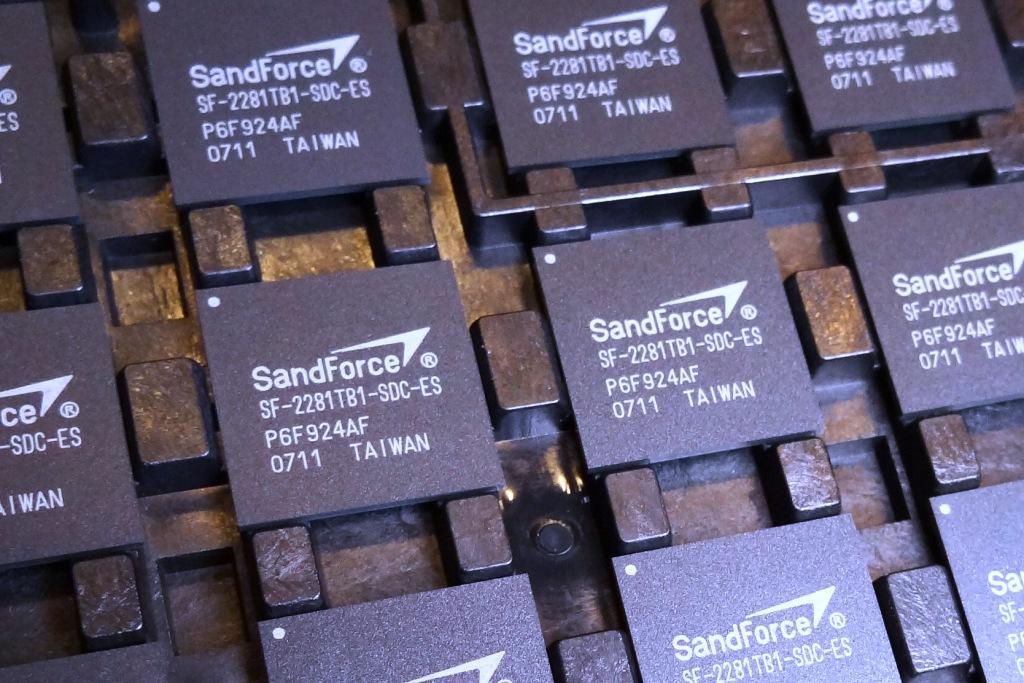If NAND flash is the fuel, than a controller is the engine. This article takes a look at controller and firmware, it’s importance, and the players that “Own the Controller”.
The first debate is what’s more important, the controller itself, or the firmware that drives it?
While a debatable issue, we can certainly agree that one does not work without the other. Further, significant Intellectual Property (IP) is contained in both.
Controller companies such as LSI (Sandforce), Marvell, OCZ (Indilinx), Samsung, Sandisk and STEC each have unique models. LSI (Sandforce) has enabled many suppliers to produce SSDs, as has Marvell, although Marvell has empowered their customers by allowing them to develop their own firware. STEC is a good example of a company that is keeping their controller and firmware development for their own branded products.
 Back to the earlier analogy. If the controller is the engine, than the firmware is the steering, transmission, accelerator and braking system, all in one. The engine (controller) can’t run without the fuel (NAND), however is arguably useless without direction and control, the firmware.
Back to the earlier analogy. If the controller is the engine, than the firmware is the steering, transmission, accelerator and braking system, all in one. The engine (controller) can’t run without the fuel (NAND), however is arguably useless without direction and control, the firmware.
Companies that design and manufacture a controller obviously have firmware expertise, however there are SSD manufacturers that are developing their own firmware, leveraging the IP of others who have designed the ASIC. Suppliers such as Micron, Seagate, SMART Storage Systems, Toshiba and Western Digital have all made investment in developing their own firmware IP.
 While the barrier to entry in NAND is the capital required to build a Fab, we have witnessed several organizations acquire the controller/firmware IP. This acquisition strategy was adopted years ago by STEC via their acquisition of the flash controller design team from Cirrus Logic. More recently we have seen SandForce and Anobit acquired by LSI and Apple, respectively.
While the barrier to entry in NAND is the capital required to build a Fab, we have witnessed several organizations acquire the controller/firmware IP. This acquisition strategy was adopted years ago by STEC via their acquisition of the flash controller design team from Cirrus Logic. More recently we have seen SandForce and Anobit acquired by LSI and Apple, respectively.
So, what does all this mean to the SSD landscape? If you are an SSD supplier driving/leveraging a brand, such as Corsair or Kingston, none of this matters. However, if you want to be a long term player in the Enterprise and OEM markets, firmware IP is an absolute necessity and having both (controller and firmware) provides the supplier with complete ownership of the engine, and all the controls.
EXAMINING THE SSD INDUSTRY SERIES – LINKED
ABOUT THE AUTHOR
 Wayne Eisenberg served as Vice President of Worldwide Sales and Marketing Communications at SMART Modular Technology from April 2002 until his retirement in 2011 and held other sales management roles at SMART since 1995.
Wayne Eisenberg served as Vice President of Worldwide Sales and Marketing Communications at SMART Modular Technology from April 2002 until his retirement in 2011 and held other sales management roles at SMART since 1995.
Wayne has also held various positions at other high technology companies including Toshiba America CSD, GRiD Systems and Harris Corporation.
He holds a B.A. in Journalism with a minor in Business Administration from California State University at Chico.
Wayne has extensive experience in worldwide sales and international business development, an impressive record of achievement, and has lead sales in all customer segments “ OEM, Channel, and Enterprise “ and, has market and relationship successes in telecom, networking, storage, computing, industrial, and defense/aerospace.
 The SSD Review The Worlds Dedicated SSD Education and Review Resource |
The SSD Review The Worlds Dedicated SSD Education and Review Resource | 
SandForce does allow clients to develop their own firmwares – Intel 520 Series is a prime example of that.
The way I have understood it is that Marvell provides a very scarce firmware, hence most Marvell based drives we see use a custom firmware. However, this is also the reason why SandForce is way more popular among OEMs. Marvell requires you to invest on your own firmware developing crew if you want to succeed – whereas SandForce provides an out-of-the-box ready firmware, which means you don’t have to invest anything on FW development.
This article has some serious grammatical mistakes.